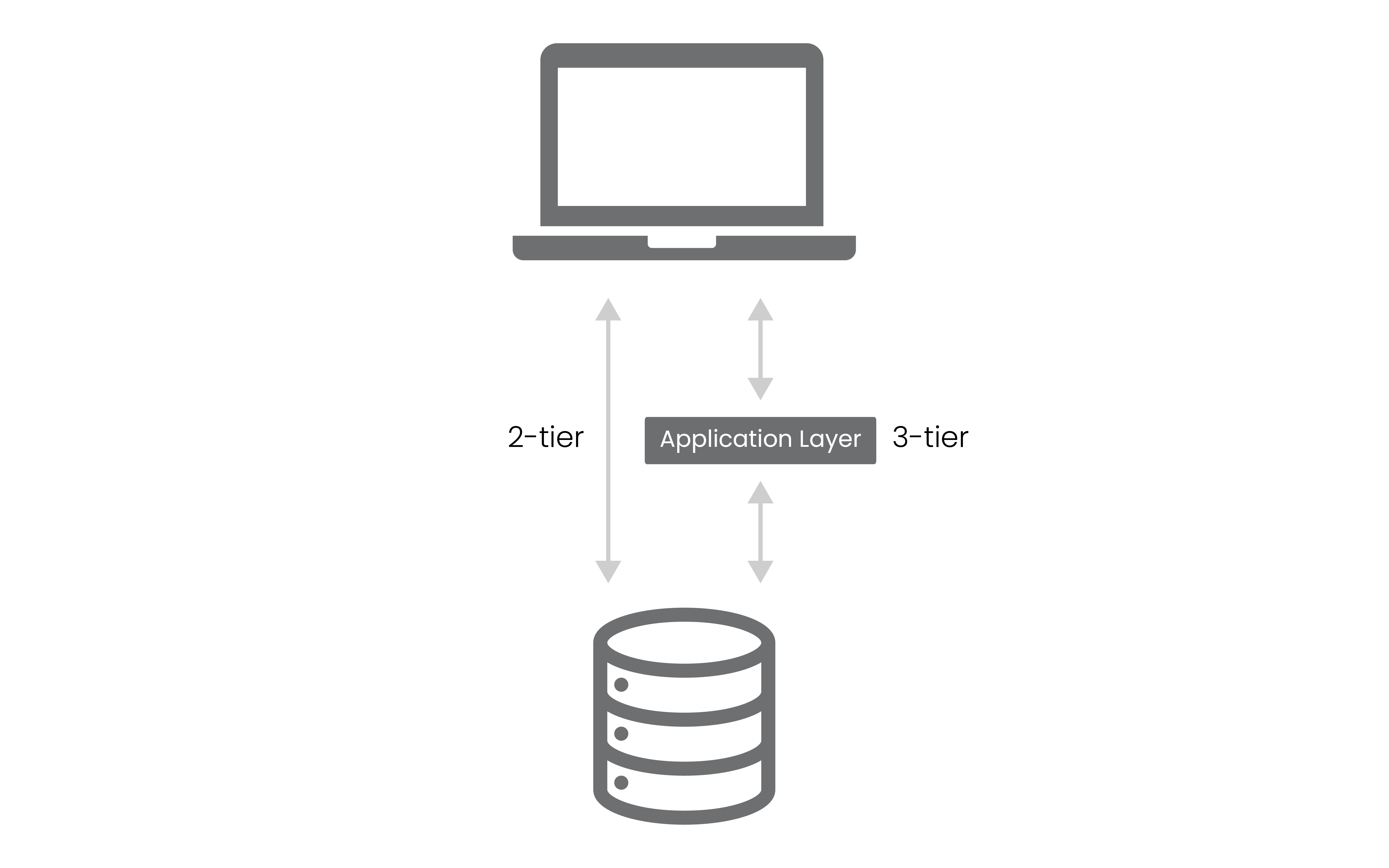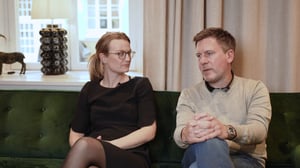
4 Generations of Investment Management technology
The link between modern technology and business benefits isn’t always apparent (and sometimes doesn’t exist... it's painful to write this, but cool tech isn’t always useful).
In the case of Investment, Order and Portfolio Management Software we have only seen 4 major epochs of technology shifts that offered significant new benefits to asset managers. In this article we’ll explore them all - from a business perspective (i.e. we'll stay away from the technical details, for now...).
Our goal is that by the end of this article you'll understand the business impact of choosing between the different generations’ investment management technology. You will also have a better understanding of how important this consideration is for you.
Limina builds, delivers and services only one product: an investment software which is a generation 4 system. Limina was started by investment managers as a reaction to problems with existing systems.
We know how difficult it is to find honest and transparent information out there. Hence, we will keep this post as objective as we possibly can, calling out the pros and cons with each generation. In the name of transparency, our solutions are not perfect either, which you can read more about in our article. Alternatively, if you would like to find out when we are likely a great fit, you can find that out in our video.
Generation 1 investment management technology tools: On-premise. Open & monolithic
Most investment management systems in this category were launched in the 70s and the 80s. This is important to understand because many architectural decisions of these systems were made in an era vastly different from today.
Since the cloud was decades away when these systems were created, generation 1 software is “on-premises”. They are installed and maintained by you as a client, which means you need to manage hardware in addition to the software, which drives extra categories of Cost for your Investment Management Software. Vendors in this category are moving away from this model and are encouraging (mostly with carrots) clients to move to a hosted/cloud-enabled setup.
An (unintended?) benefit of these systems is that they are generally quite open, since you can access their database. Connectivity in and out of the system is in your control as a client. Nowadays, direct database access is – in our view - the last resort for asset management integrations as it comes with significant downsides.
The architecture of these systems was usually monolithic, which means it looks something like this:

Monolithic investment manager technology
Having all logic in one single layer, or in the database and user interface layers, creates the following challenges:
- Since there is one large code base without hard (technical) boundaries between modules, developers are usually not able to understand the entire application, leading to slower development over time.
- Because of the lack of hard (technical) boundaries, development teams can’t be formed effectively around functional areas or around user types, leading to further slowdown in development.
- It’s difficult for developers to know how a feature “should” be implemented, which leads to lower code quality. This in turn leads to increased testing requirements and/or bug risks, ultimately driving cost and risk up for you.
- The monolithic architecture forces the vendor to stick to the technology it chose at inception (40 or more years ago). Introducing new technologies – such as modern programming languages - would require a complete rewrite of functionality that’s in production, which is expensive and risky (compare with building a new aeroplane and migrating in-flight passengers to it).
Generation 2 buy side fund technology: Hosted. Semi-closed & monolithic
The code / software in this generation is the same as the first generation. The difference is that the vendor, or a 3rd party firm, is responsible for hosting an instance of the system in the cloud or in a data centre.

The cons around slow development and high testing requirements remain from the first-generation investment management systems.
A key benefit with hosted software is that a firm specialised in security, redundancy and disaster recovery is responsible for the system. Increasingly, this has become a selling point to investors in due diligence processes.
When moving the on-premises solution to a data centre hosted by the vendor, one new con was introduced however: the system is no longer open (or at least not as open). Depending on the details of the model, you might not be able to access the database easily anymore and/or you might not be able to host your code (that accesses the database) at the same place as the system.
Generation 3 technology for fund managers: One-size-fits-all cloud-native / SaaS. Closed & monolithic
Software-as-a-Service (SaaS) or cloud-native solutions as they’re also called, marks the start of generation 3.
We also refer to generation 3 as the “first generation SaaS” or “one-size-fits-all SaaS”.

SaaS is the biggest shift in terms of total cost of ownership among the 4 generations. Some costs disappeared altogether, and others decreased.
Paradoxically, generation 3 also came with lower operational risk for you than generation 1 and 2. This is because the provider is responsible for security, business continuity, data backups, performance etc in an environment built to be managed by the vendor. Compared to generation 2 where the software was not intended to be hosted in the first place, moving it to hosted was an afterthought.
Generation 3 investment management systems also offer rapid deployment compared to its predecessors. The system is generally designed to be (close to) instantly deployed with standard configuration. In a nutshell: you can get value from the system faster!
Upgrades and updates are smoother since the vendor manages them. The vendor decides when to upgrade which means you are likely to receive upgrades more often, with high quality. However, an upgrade might come when it’s not convenient for you. Or you might want to run specific tests in conjunction with each upgrade, which doesn’t work with the one-size-fits-all SaaS model.
One drawback with the first SaaS generation is that the system is closed. Usually, the system comes with managed connectivity as the primary type of integration, which makes you dependent on the vendor for change management and growth. It might impose very real limitations on your business development efforts.
Note: a generation 3 portfolio and Order Management System is likely to be multi-tenant. We dig into the pros and cons with that in this article.
Generation 4 technology in investment management: Enterprise cloud-native / SaaS. Open & microservices
As the most modern technology in our industry, generation 4 is an evolution of the “one-size-fits-all SaaS” (generation 3). It directly addresses the concerns around openness and upgrades that the 3rd generation faced. We call it “Enterprise SaaS”.

Cloud adoption of investment management systems is low, mostly due to lack of systems that fit governance processes for established asset managers (approximately $1-100bn Assets under Management). We project this will change quickly over the coming years, as 4th generation systems have started to become more widely available.
The upgrade process in Enterprise SaaS can be compared with a set menu. You can’t go “off menu” and ask for something completely custom as you could with generation 1 (and sometimes 2). You can however pick the best fit offering from the menu (in generation 3, you had only one choice). This means the upgrade cycle and process is likely to fit any specific oversight requirements you might have around freeze periods or even workflow testing before upgrades.

Openness: An Enterprise SaaS product sets out to offer integration possibilities where you aren’t held back by the vendor for business development. This usually results in multiple different options for connectivity, depending on your needs and the types of integrations.
A key drawback of an Enterprise SaaS solution is that it’s likely to have a higher upfront cost than one-size-fits-all SaaS. You can explore all cons in our blog on the topic. There is no clear winner between Enterprise SaaS and one-size-fits-all SaaS when it comes to total cost of ownership. Your unique circumstances need to be considered to figure out which will provide the lowest cost over time.
Finally, Enterprise SaaS sets out to deliver “enterprise” functionality, such as
- Configurable data quality controls, so you can achieve accurate, complete and real-time portfolio data. With an increased confidence in data, you reduce operational risk and can focus on investment returns.
- Approval workflows for trades and changes, such as compliance rules and instruments. This enables better oversight.
Note: a generation 4 portfolio and Order Management System is likely to be single-tenant (also commonly referred to as multi-instance in cloud-based solutions).
Microservice buy side fund technology
Pioneered in the 2010s by firms such as Spotify, Netflix, Amazon and Uber, microservices enable a more scalable and reliable system.
Microservices means that a (large) system consists of many small parts that are separated by hard technical boundaries. The pros for your business are for example:
- Development speed is maintained as the application grows. This is due to hard (technical) boundaries between modules which in turn makes it easier for developers to understand the context they develop in.
- Development teams can be formed effectively around functional areas, or around user types, leading to further development speed. It also ensures great workflows, that have been designed end-to-end. This in opposition to one part of the workflow being designed by one team and another part by another team – causing a fragmented user experience.
- Since the application is easier for developers to understand, it is also easier to test. This lowers the bug risk and ultimately reduces cost for you.
- The microservice architecture enables choice of the best technology for various areas of the application. Since the services are small, it’s also less risky to gradually swap technologies as it becomes outdated, one service at a time.
Generation 5 investment management technology?
There is no generation 5 yet and we don't know what/how it will look like, but surely the next generation of asset management will arrive at some point. Right now, there are no cutting-edge technologies that are looking promising as the basis for a new generation. However, there are emerging technologies that might completely change the shape of investment management technology. One of them is digital issuance.
We hope that we were able to keep this article focused as much as possible on business aspects of the different generations of buy-side technology. Having been investment managers ourselves, both in technical and non-technical roles, we know it’s a complex subject. If you would like to discuss, please don’t hesitate to contact us.








